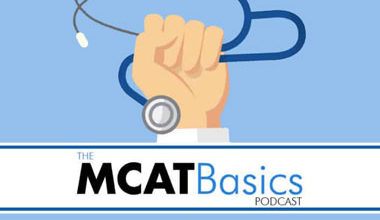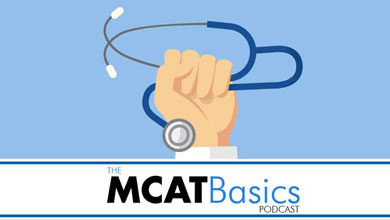The MCAT Basics Podcast with Sam Smith of MedSchoolCoach covers many topics on the AAMC MCAT. Each podcast covers a different topic, and up to 3 of the 4 MCAT sections. Lesson topics are based on the practice material, including practice tests, question banks.
Glycolysis is the metabolic pathway that converts glucose C₆H₁₂O₆, into pyruvate, CH₃COCOO⁻, and a hydrogen ion, H⁺. The free energy released in this process is used to form the high-energy molecules ATP and NADH. Glycolysis is a sequence of ten enzyme-catalyzed reactions. Glycolysis is the first pathway of cellular respiration that oxidizes glucose molecules. It is followed by the Krebs cycle and oxidative phosphorylation to produce ATP. Glycolysis is the first of the main metabolic pathways of cellular respiration to produce energy in the form of ATP. Glycolysis takes place in the cytoplasm. Within the mitochondrion, the citric acid cycle occurs in the mitochondrial matrix, and oxidative metabolism occurs at the internal folded mitochondrial membranes (cristae).
The citric acid cycle – also known as the TCA cycle or the Krebs cycle – is a series of chemical reactions used by all aerobic organisms to release stored energy through the oxidation of acetyl-CoA derived from carbohydrates, fats, and proteins, into adenosine triphosphate and carbon dioxide. Overview of the Krebs or citric acid cycle, which is a series of reactions that takes in acetyl CoA and produces carbon dioxide, NADH, FADH2, and ATP or GTP. The main function of the Krebs cycle is to produce electron carriers that can be used in the last step of cellular respiration.
The electron transport chain is a series of complexes that transfer electrons from electron donors to electron acceptors via redox reactions, and couples this electron transfer with the transfer of protons across a membrane. The electron transport chain is built up of peptides, enzymes, and other molecules. The process of forming ATP from the electron transport chain is known as oxidative phosphorylation. Electrons carried by NADH + H+ and FADH2 are transferred to oxygen via a series of electron carriers, and ATPs are formed. Three ATPs are formed from each NADH + H+, and two ATPs are formed for each FADH2 in eukaryotes. The electron transport chain is a system of molecules through which electrons are transferred to generate ATP. It has an important role in both photosynthesis and cellular respiration.
[01:39] Introduction to the show and topics today [04:23] Biological and biochemical foundations of living systems [11:34] How to memorize using various tips [17:23] Regulation of glycolysis [25:39] Krebs cycle [31:39] Molecules that regulate pyruvate dehydrogenase complex [35:20] The electron transport chain [39:43] Important things about Cytochrome C [43:35] Understand how the ATP synthase functions“Glycolysis is the first step in the breakdown of glucose and it occurs in the cytosol and essentially what’s going on is in the overall action, you are splitting glucose into two, three-carbon molecules“


